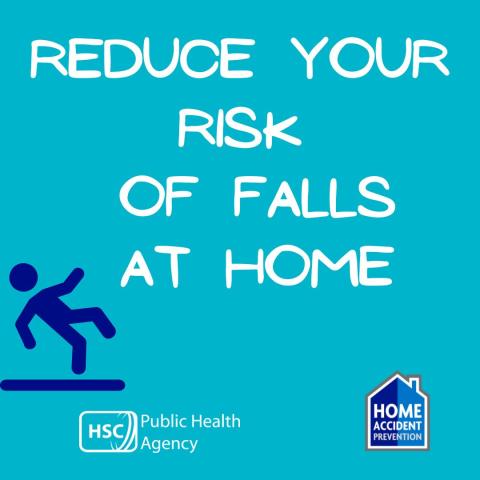Tips on preventing a fall at home

This week marks Falls Prevention Awareness Week and the Public Health Agency (PHA), in partnership with local councils, is encouraging everyone to take measures to reduce their risk of falls at home.
In 2020 there were 251 falls deaths out of a total of 349 accidental deaths in those aged 65+ representing 72% of accidental (unintentional injury) deaths in that age group * in Northern Ireland.
“Falls can have huge consequences,” said Janine Gaston, Interim Health and Social Wellbeing Improvement Manager with the PHA.
“They can result in pain, injury and sometimes death. It is really important to identify factors that can increase the risk of falls at home and take action to reduce the risk of them happening.
“Falls can affect anyone but a lot of older people fear a fall and this loss of confidence can significantly impact on their ability to remain independent.
“It’s important that if you know someone who needs help in avoiding falls that you talk to them about what they and you can do to help prevent falls at home and help restore that confidence.”
Ten tips to help prevent a fall at home
- Get up from your chair or bed slowly to avoid dizziness and use a walking aid if provided.
- Only take medication prescribed by your doctor, at the correct dosage, and don’t mix prescription medicines with alcohol. Have your medication reviewed regularly by your doctor or pharmacist.
- Keep your stairs clutter free – don’t leave items lying on the stairs that could cause a trip or fall.
- Ensure your home is well lit (use high wattage, low energy light bulbs) and always put lights on at night, especially when getting up during the night. Ask a friend or family member if you need help changing lightbulbs.
- Remove all loose and worn mats.
- Avoid trailing leads and wires.
- If you use slip-resistant mats in the bath or shower, ensure they are used appropriately, removing them after use to air dry and cleaning the soap suds that can build up and cause a slip.
- Mop up any water and spillages as soon as possible.
- Have broken or uneven pathways outdoors repaired.
- Take extra care when walking on icy pathways and doorsteps.
Simple health checks and actions can also help reduce the risk of falls:
- Check your eyesight – good vision has a major role in how you maintain your balance. Eye tests are free for everyone over the age of 60.
- Look after your feet – as you get older, the size and shape of your feet may change so always have your feet measured when buying new shoes. Choose footwear that has a back with a strap, Velcro or preferably laces to secure them tightly. Avoid high heels and slip-ons.
- Bone health – osteoporosis is known as the silent illness and results in more fragile bones that will break more easily, often following a fall. There are a number of risk factors that can increase your likelihood of developing osteoporosis such as family history, smoking, drinking alcohol, long-term immobility, early menopause, previously fractured bones and certain medical conditions. If you think you might be at risk of this condition you should contact your GP.
- Exercise and physical activity – activities that improve muscle strength in our legs, arms, back, shoulders and chest are particularly important as we get older. They can make it easier to get up out of a chair, and improve our posture, co-ordination and balance which reduces our risk of falling. Exercise must be performed at least three times a week for effective falls prevention. If you’re unsure of what exercises you may be capable of, speak to your GP.
Free home safety checks are available for over 65s and provide an opportunity to help identify risks in the home and provide advice about reducing them. For more information contact the Home Safety Officer at your local council visit www.nidirect.gov.uk/contacts/local-councils-in-northern-ireland
The PHA and councils across Northern Ireland have produced a falls prevention video to raise awareness of the measures we can take at home to prevent falls. This can be viewed at www.pha.site/StaySteady and an accompanying booklet is available from your local council.
